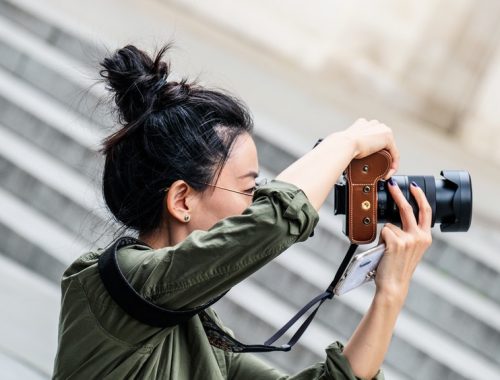
Becoming a freelance photographer: a step-by-step guide
Turning a passion into a day job is the definition of living the dream for lots of photography enthusiasts. Here, we take a closer look at what’s involved in becoming a freelance photographer.
- A guide on how to become a freelancer in the UK
- A guide to becoming a freelance graphic designer
- Is there a difference between being self-employed and being a sole trader?
- Why do I need business insurance?
Going freelance is rarely as simple as waking up one day and deciding to turn your hobby into your profession. While anyone can make the leap, working out how to make a success of it is another thing altogether. There are also practicalities you need to consider when setting up your business.
1. Should I specialise in a type of photography?
When people search online for a photographer, they’ll often have a particular type in mind. So make sure it’s immediately obvious where your strengths lie. Deciding on an area you want to specialise in will also help you stand out from the crowd.
You might be out in the field working for a news organisation. You could be on location with a fashion house. Maybe you’ll prefer the comfort of a dedicated photography studio.
Here’s a selection of photography routes you could choose to go down:
- Fashion photography
- Pet photography
- Portrait photography
- Press and PR photography
- Product photography
- Sports photography
- Wedding photography
- Wildlife photography
2. Practice makes perfect
With that in mind, the first thing you need to do is get as much experience as possible. Getting out there and actually doing it is key to building your skills, ability, and your all-important portfolio.

You could begin by offering to photograph a family member’s wedding, for example. The other option is to speak to experienced photographers about offering your services on a part-time basis or as an apprentice.
3. Do I need qualifications to be a photographer?
It’s true that creativity and visual flair are more vital than qualifications. But while you don’t need them, they could be a good way to boost your confidence – and reassure your customers that you’ve got what it takes.
Most professional photographers have taken a college or university course, according to UCAS.
To get yourself a place, you’ll usually need somewhere in the region of five GCSEs and two to three A levels, including one in art, design, or media. The other option is to take a level 3 vocational course in art and design, or photography.
The content of photography courses can vary, so make sure you choose one that suits the area you want to specialise in.
4. How much does it cost to become a photographer?
Setting up as a freelance photographer can be expensive. The final bill will depend a lot on what type of photographer you want to be, and whether you’ll be based from home or rented premises.
Photography equipment
Startups.co.uk estimates the cost of a top-of-the-range professional camera to be somewhere in the region of £2,000. Add a telefocus lens and you’re looking at increasing your total by anything from £200 to £2,000. For a separate flash gun it’s £200-£400. A tripod will cost you £100, and it’s £50 for a remote trigger.

Don’t forget editing software and, depending on whether you decide to do your own printing, a professional-standard printer. It may be simpler to leave this to a printing specialist in the early days, though, giving you one less thing to think about while you’re setting up.
Renting a photography studio
If it’s a studio you need, renting a shop may be a good option. While you should take the cost into consideration, it’s one way to get your business noticed through footfall, which is essentially free advertising.
Converting your garage into a photography studio could be another option.
5. How much does a photographer make a year?
Startups.co.uk estimates the annual salary of a reasonably successful professional photographer to be around £20,000. And the National Careers Service gives an average range of photographer salaries between about £25,000 and £31,000. Although, that’s for employed rather than self-employed photographers.
Here are a few examples of how much you could earn as a freelance photographer.
According to londonfreelance.org, you can expect to be paid the following day rates:
- Magazine photography – from £300 for smaller publications, up to £800 for large glossy magazines
- Press photography – from £100 for local newspapers, up to around £250 for national newspapers
Hitched.co.uk suggests that fees charged by reputable wedding photographers range from around £1,000 right up to more than £3,000.
It can be a good idea to research what other photographers in your location (and specialism) are charging for their services, too.

6. Don’t forget the legal side
You should think about the legal structure of your freelance business before you begin trading. To find out more, read our article that sets out the differences between being a sole trader and setting up a limited company.
The route you choose will likely depend on your personal situation and the type of clients you work with, so research your options thoroughly.
And don’t forget to register your business with HMRC, so you can pay the tax you owe on what you earn, and avoid being stung with a penalty. How you do this might vary depending on the legal structure you choose. Our article on registering for Self Assessment tells you everything you need to know.
7. Insure your photography business
Accidents and mistakes can happen, so make sure you think about insurance. Simply Business offers all the important covers for freelance photographers. Read more about:
- Professional indemnity insurance
- Public liability insurance
- Product liability insurance
8. Marketing your photography business
When it comes to winning business, your customers are going to be most interested in your natural creative flair and technical ability. They’ll be able to tell whether they like your work or not by looking at your portfolio – the freelance photographer’s shop window.
Local press is a great way to advertise your services, especially if you want to focus on weddings, portraits, or pets. It might cost a bit to begin with, but as word-of-mouth trade grows, you should see your advertising spend shrink.

Promoting your photography online
To market yourself effectively, get a clean and simple website – and make sure you only show your best work. In a competitive marketplace you don’t want to give potential customers any reason to click away from your site and on to the next photographer. Check out our top tips on building a website for your business.
And never underestimate the power of social media. Just be mindful of choosing the most relevant platforms for your business. Think about Instagram and Pinterest to show your photos in the best light.
It’s important, though, not to spread yourself too thinly on social. You may run out of time to manage all those accounts and respond to your customers properly, which won’t do your professional reputation any favours.
9. Join a professional association
To stay ahead of the curve with everything happening in your industry, it’s a good idea to join a professional association, like the Association of Professional Photographers or the British Institute of Professional Photography.
10. People skills
Finally, don’t overlook the other skills you’ll need, either. If you choose to work with kids or animals, patience and warmth will be important traits to get across to your customers.
Similarly, with special occasions like weddings, emotions can run high. So keeping a cool head and offering a reassuring smile while your clients are in a fluster will be essential.
You May Also Like

Five Awesome Summer Landscape Photography Ideas
July 18, 2019
How to Become a Professional Photographer – The Ultimate Guide
June 30, 2019

